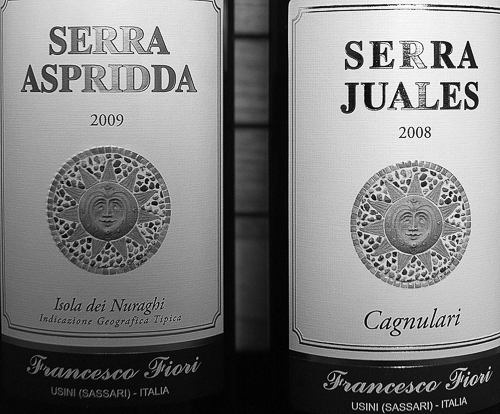Usini is a small village in the province of Sassari where the brightness and the space radiate in all directions filling the houses, the fields and the locals with an invisible energy, but palpable and noticeable in the generosity of the locals who willingly share their produce with visitors, while not expecting anything in return.
The completeness and spontaneity of their offers together with the skill with which they perform the necessary operations from birth via growth to harvest of their fruits is matchless. This is the impression we got from meeting them, entering their surroundings in which they carry out manually the various phases of turning grapes into wine. The way they describe their work is so precise, detailed and specific, while at the same time so clear and understandable even to us who hear about this for the first time in our lives.
We went to visit the wine cellar of Francesco Fiori, a young producer of wine, who after having worked in Sardinia and Piemonte, have decided to return to his birthplace and take up again the activity of his father and his grandfather together with his great grandfather and so on. In fact, the tradition of growing wine in Sardinia stretches back to prehistoric times.
Francesco is cultivating the Cagnulari grape, a native, Sardinian grape. Indeed, there are no indication of this type of grape occurring anywhere else near the Mediterranean. The Cagnulari grapes are used to produced a dark, full-bodied, red wine, an I.G.T. (Indicazione Geografica Protetta), which is called “Serra Juales”.
The other vine Francesco is cultivating is the Vermentino, which may be considered as a native since it has been known to be cultivated in Sardinia since the Middle Ages.
Francesco is always striving for a more organic production of his vines. The small extent of his vineyard allows him to control all phases of the productive cycle: from preparing the clayey-chalky soil to planting new vines to grafting new vines to old ones. Being the owner of the vineyard, he has also total control of all stages from the harvest via winemaking to storage of the wine.
He’s making extensive use of green manure in order to make the soil ready for planting of new vines. That is, he’s mainly planting legumes on any field not occupied by vines. When the legumes are mature, the field is is plowed, leaving the uprooted legumes to decompose below ground, enriching the soil mainly with nitrogen. He’s also weeding his fields manually such that the vines can have the nutrients of the soil for themselves.
Between January and March, the vines are lethargic, meaning that they aren’t producing any buds, the primary pruning takes place.
The second pruning called “green pruning” is performed manually by removing excess shoots between March and June. The removal of fresh shoots naturally lessens the quantity of grapes which grow to maturity, but it improves their quality significantly.
After having harvested the grapes, Francisco turns the grapes into wine with the same passion and care as he uses for the cultivation of the vines. In the wine cellar, the grapes are first squashed in order to get hold of the juice of the grapes. After having finished this operation, the juice is pumped into various containers where successive stages of fermentation and removal of fixed impurities happens. The white wine is ready for bottling in February, while the red one is only bottled between June and August. While the white wine can be sold just after having been bottled, the red wine has to be stored until December, that is 4-5 months after bottling before it can be sold.

